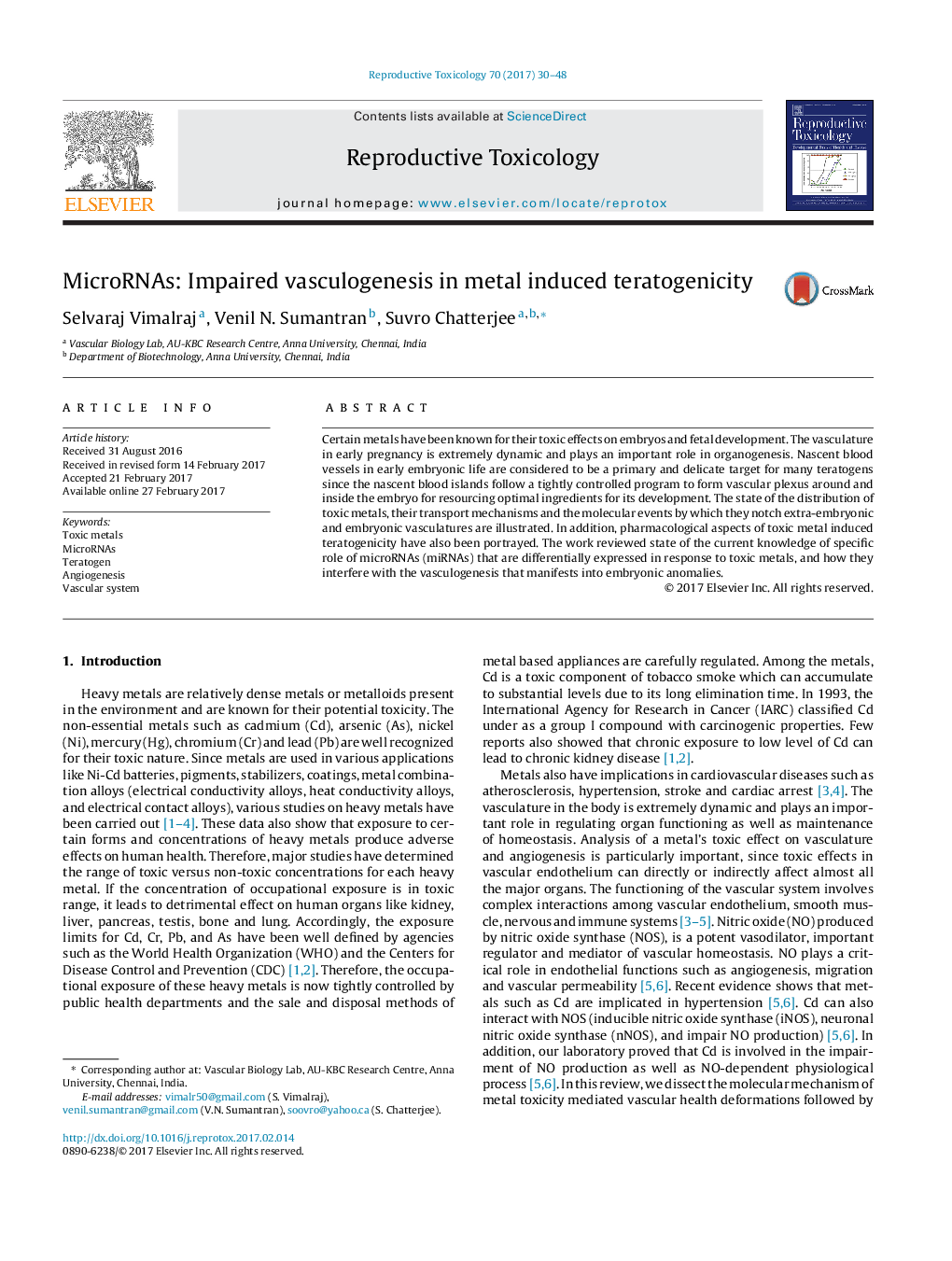| Article ID | Journal | Published Year | Pages | File Type |
|---|---|---|---|---|
| 5561414 | Reproductive Toxicology | 2017 | 19 Pages |
â¢Metal toxicity interferes with embryonic vasculature by intervening with vascular signaling pathways including microRNAs.â¢Metals toxicity distorts differential expression of microRNAs in developing embryo, and thereby it induces maldevelopment.â¢The microRNAs are proposed as therapeutic entity for preventing vascular anomalies in developing embryos.
Certain metals have been known for their toxic effects on embryos and fetal development. The vasculature in early pregnancy is extremely dynamic and plays an important role in organogenesis. Nascent blood vessels in early embryonic life are considered to be a primary and delicate target for many teratogens since the nascent blood islands follow a tightly controlled program to form vascular plexus around and inside the embryo for resourcing optimal ingredients for its development. The state of the distribution of toxic metals, their transport mechanisms and the molecular events by which they notch extra-embryonic and embryonic vasculatures are illustrated. In addition, pharmacological aspects of toxic metal induced teratogenicity have also been portrayed. The work reviewed state of the current knowledge of specific role of microRNAs (miRNAs) that are differentially expressed in response to toxic metals, and how they interfere with the vasculogenesis that manifests into embryonic anomalies.
Graphical abstractMicroRNAs as a target for the rescuing metal induced teratogenicity associated with impaired vasculogenesis.Download high-res image (188KB)Download full-size image
